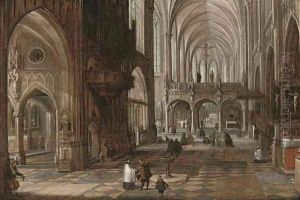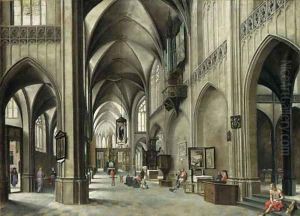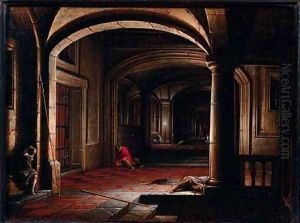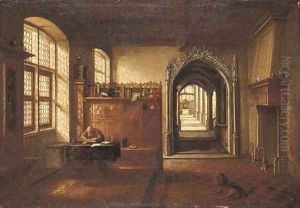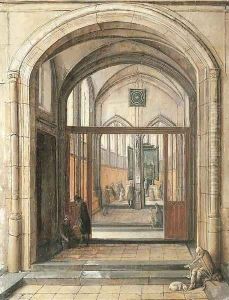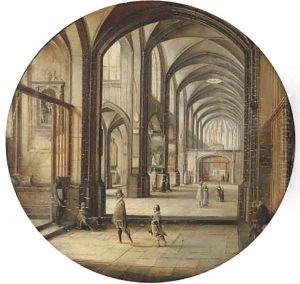Hendrick Van Steenwijck II Paintings
Hendrick van Steenwijck II was a prominent Flemish Baroque painter, recognized for his mastery in the genre of architectural painting, particularly church interiors. Born in Antwerp in 1580, into a family with a strong artistic pedigree, his father, Hendrick van Steenwijck the Elder, was also a distinguished painter of architectural subjects. This familial background provided Steenwijck with a solid foundation in the arts from a young age. The van Steenwijcks were part of the wave of Flemish artists who migrated to the Northern Netherlands and England, contributing significantly to the artistic scenes there.
Steenwijck moved to London in the early 17th century, where he became associated with the court of James I. His work in England marked a significant phase in his career, where he not only continued his focus on architectural interiors but also received commissions for perspective views, which were highly sought after by the English aristocracy. His paintings often depicted the interiors of Gothic cathedrals and churches, characterized by their meticulous detail, careful handling of light, and perspective. Steenwijck's work is noted for its ability to convey the grandeur and solemnity of these architectural spaces, making him one of the most celebrated architectural painters of his time.
In addition to his architectural pieces, Steenwijck occasionally painted still lifes and genre scenes, though these constitute a smaller part of his oeuvre. His contribution to the genre of architectural painting influenced subsequent generations of artists in both the Netherlands and England. After a successful career in London, he later moved to The Hague, where he continued to work until his death in 1649. Steenwijck's legacy is preserved in numerous collections and museums across Europe, attesting to his skill and the lasting appeal of his architectural compositions. His ability to blend technical precision with a keen sense of atmosphere makes his work a significant part of the Baroque movement, reflecting the broader interests in perspective, space, and light that defined the period.
